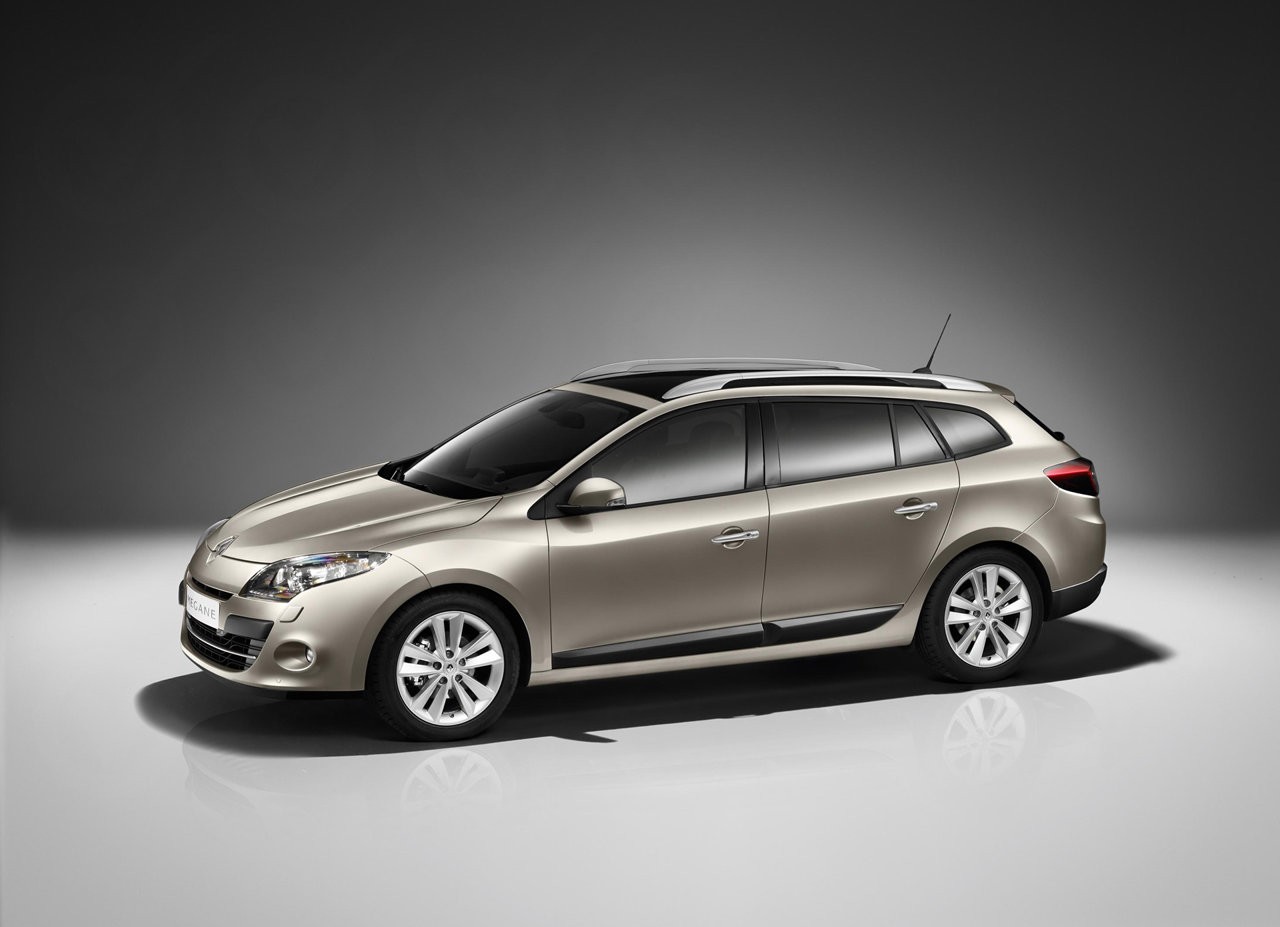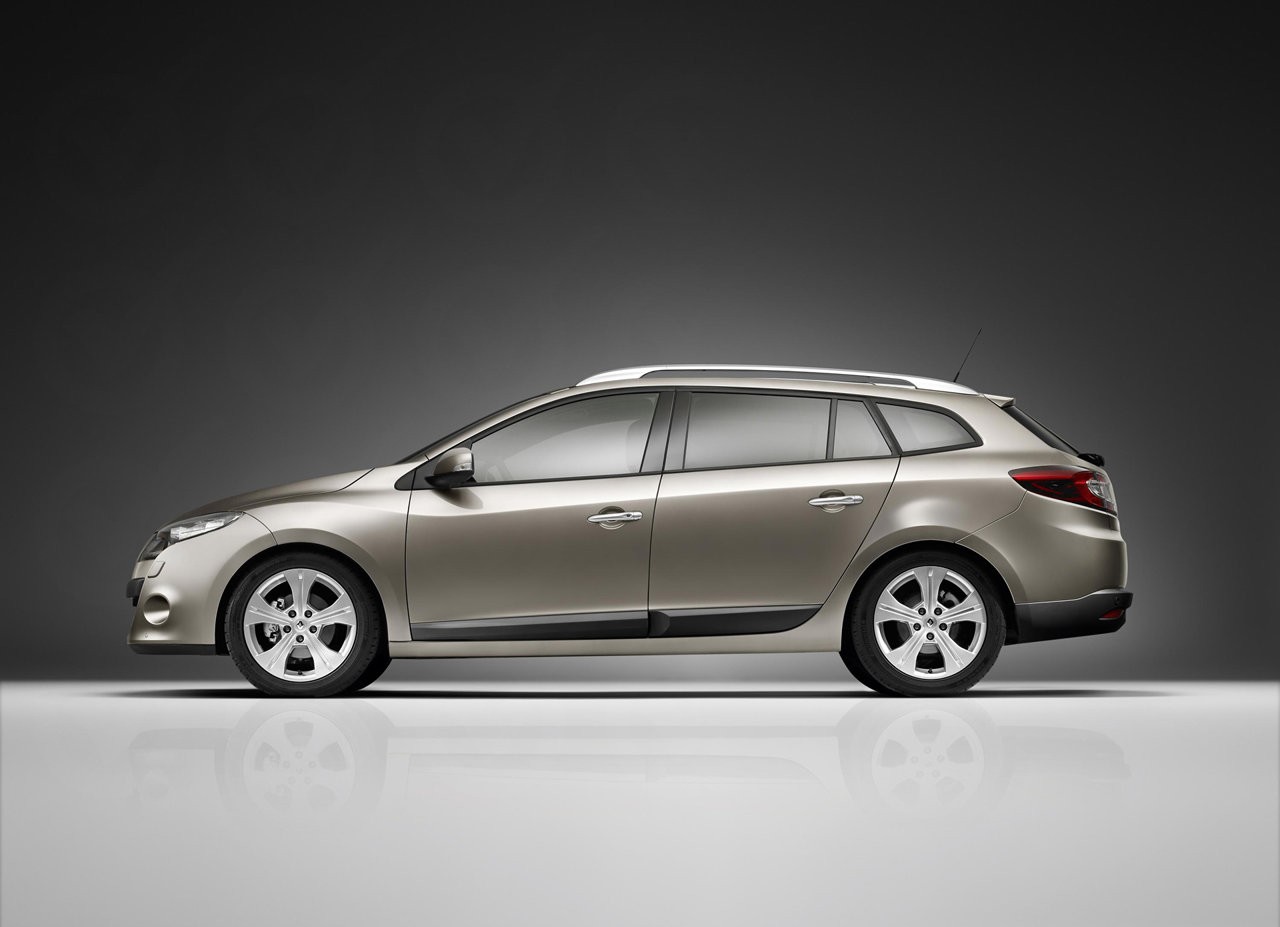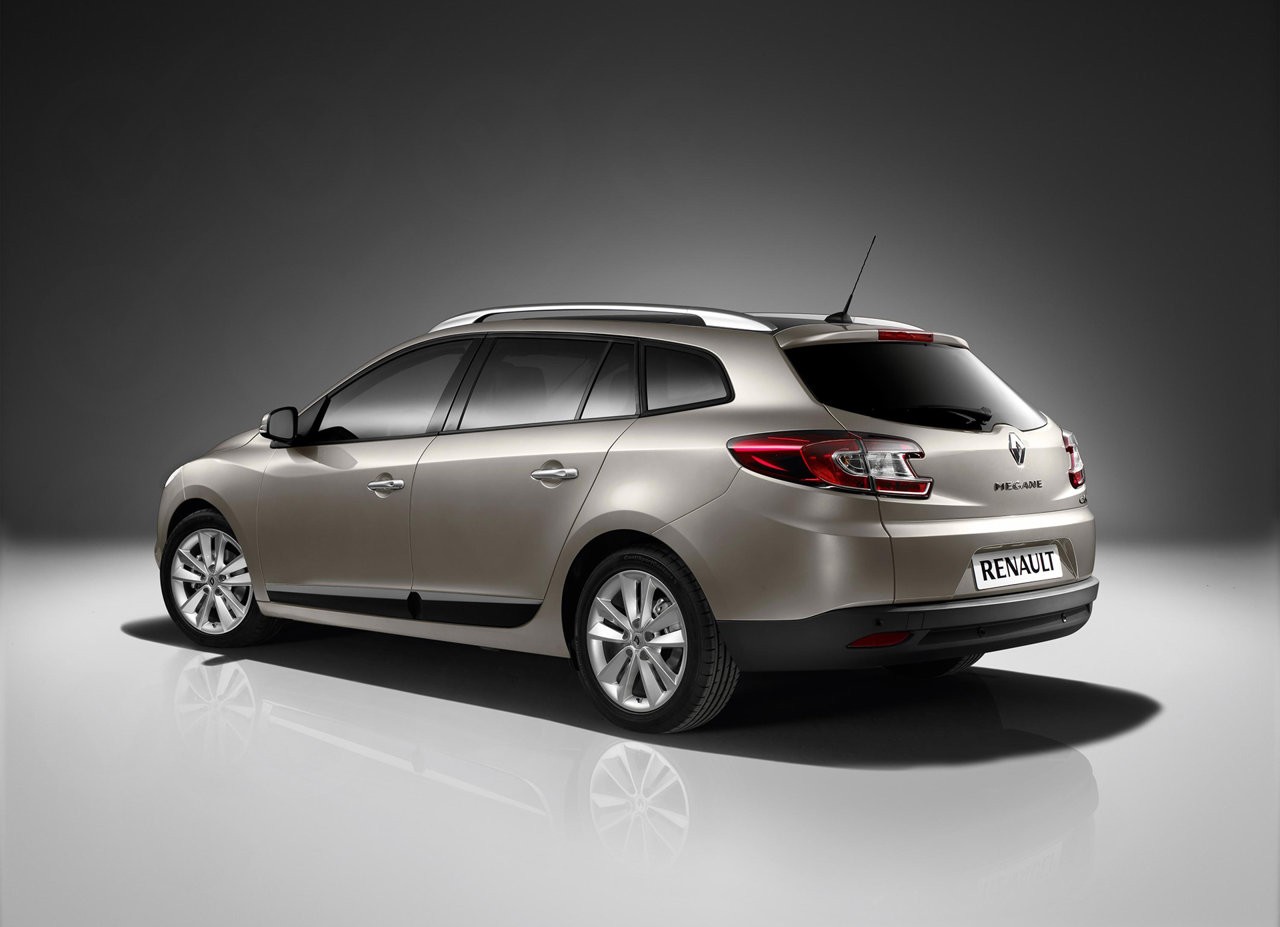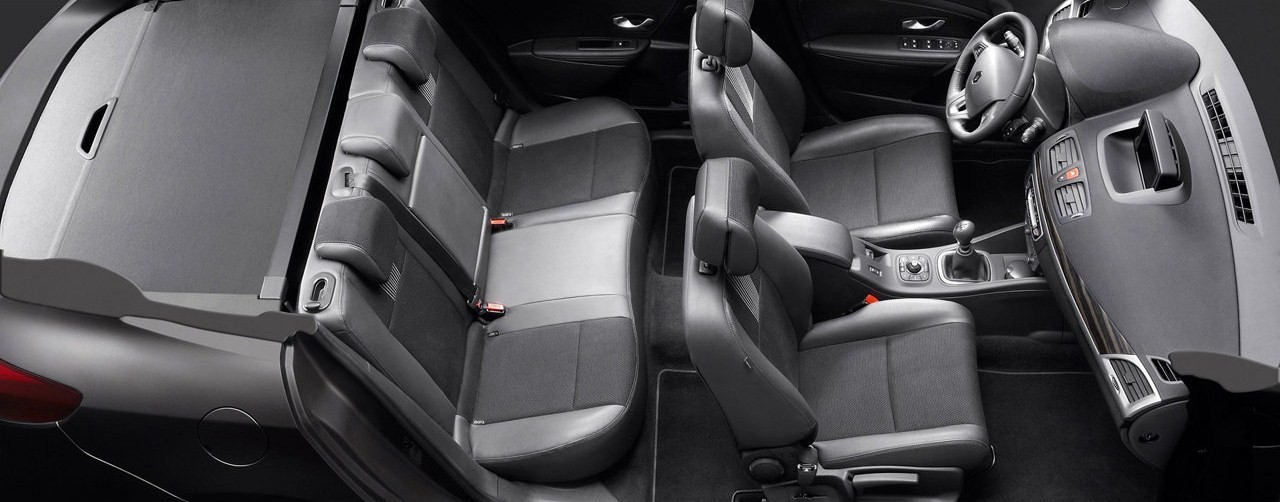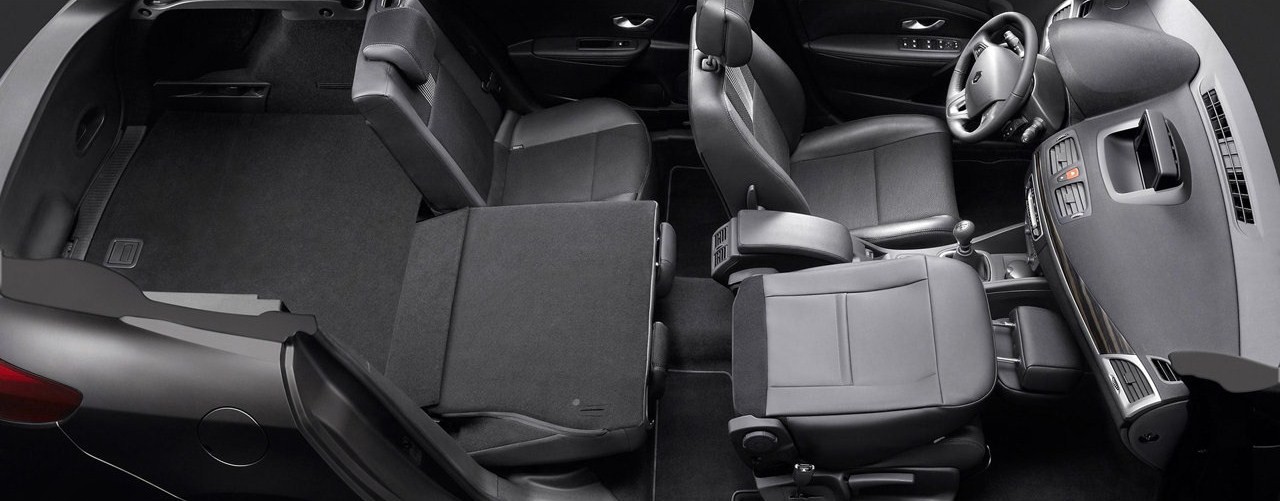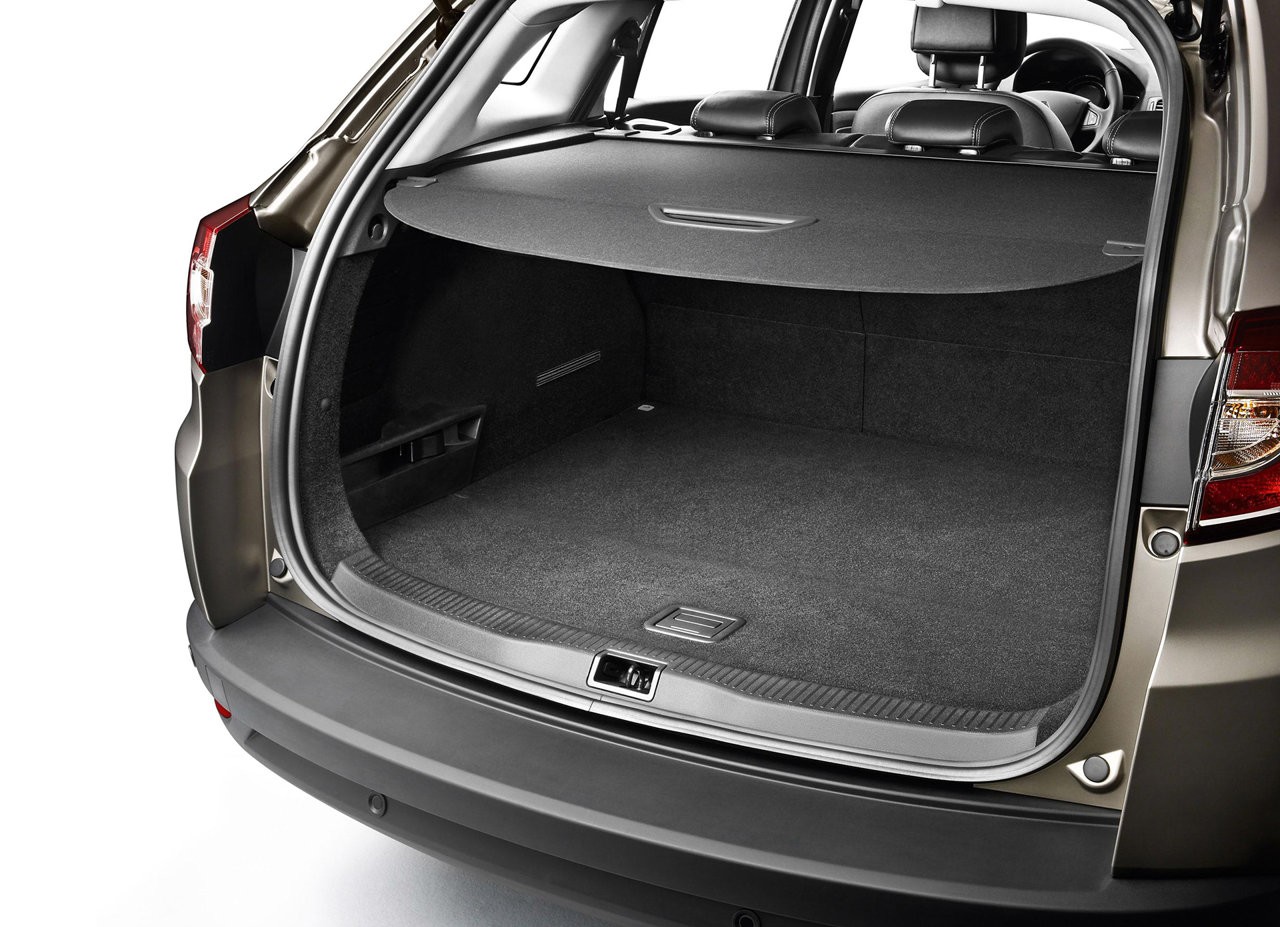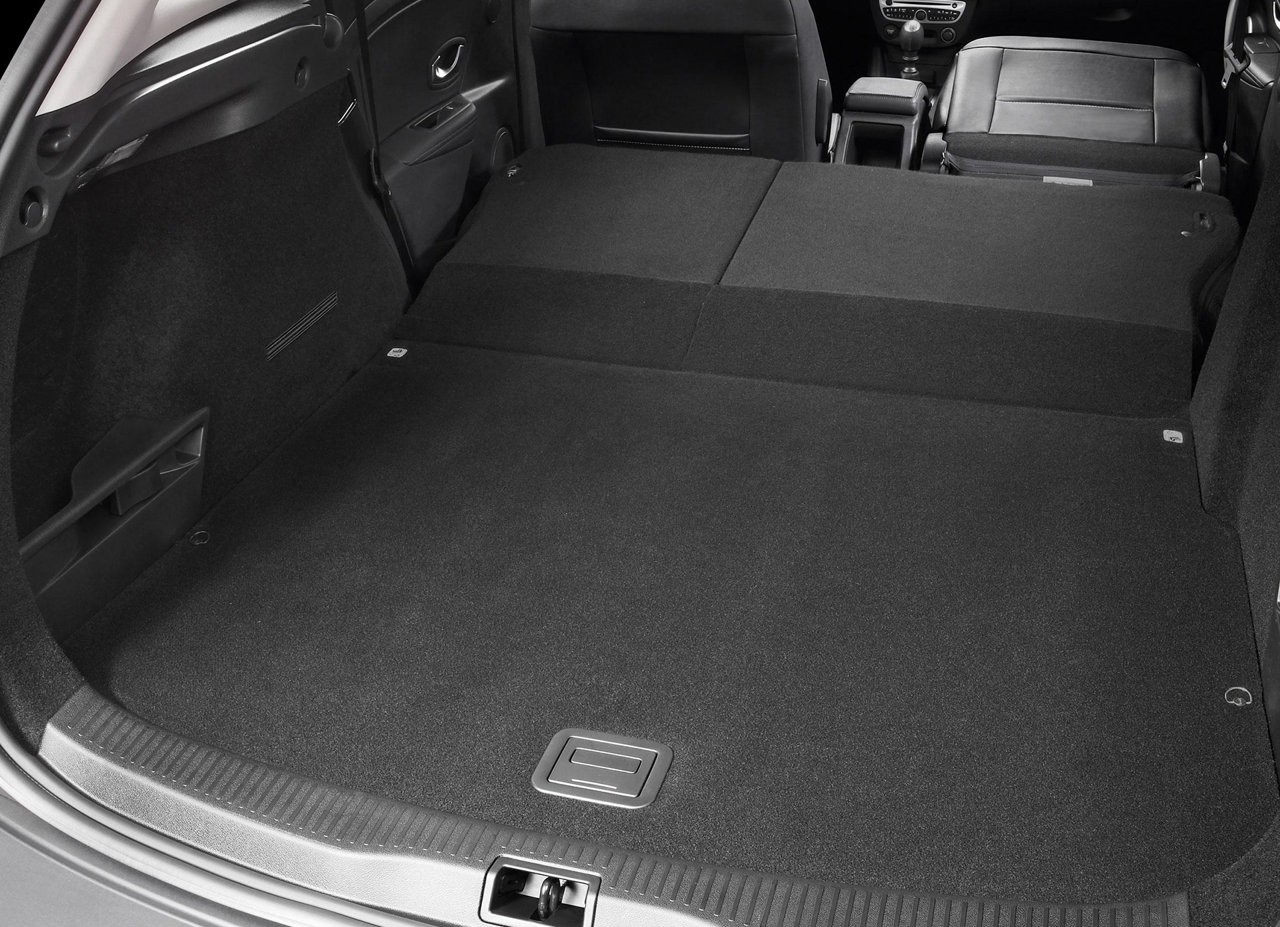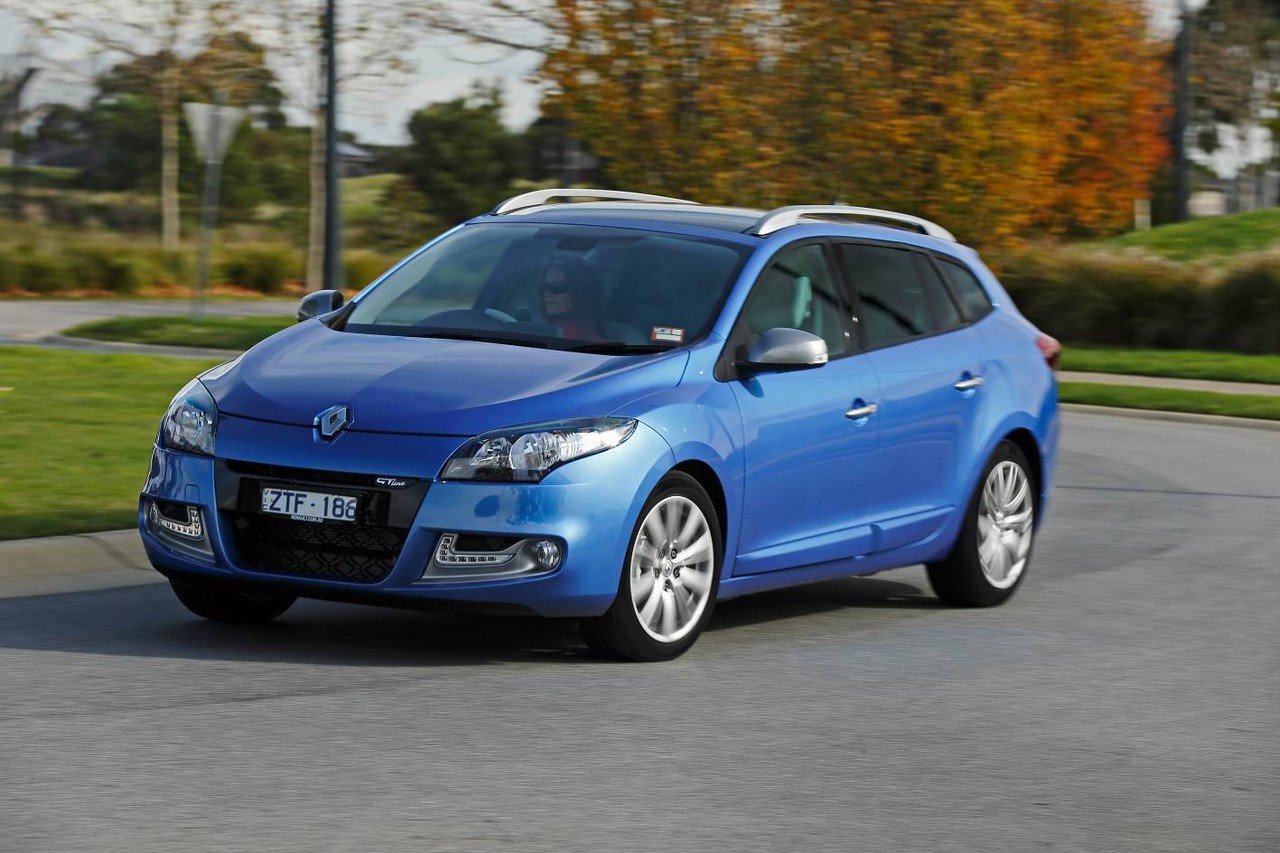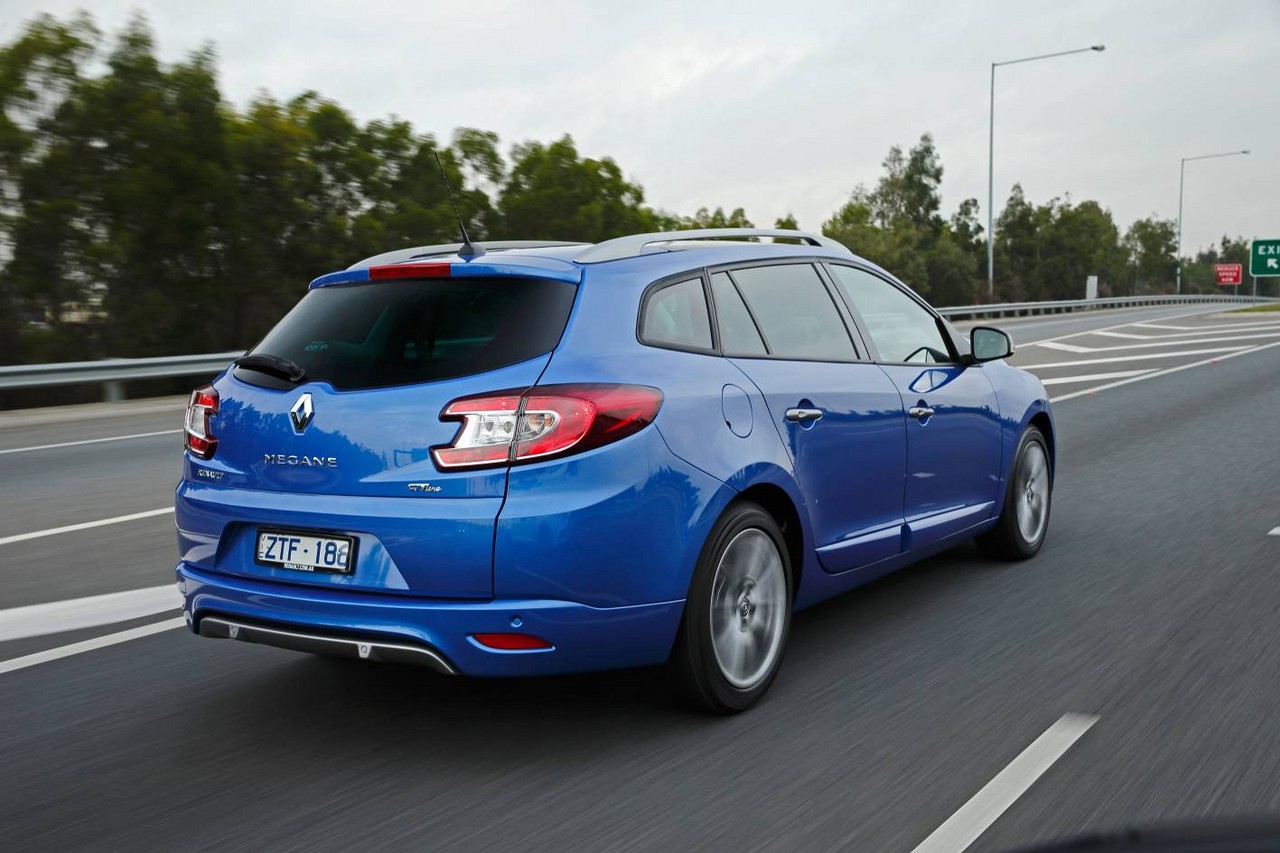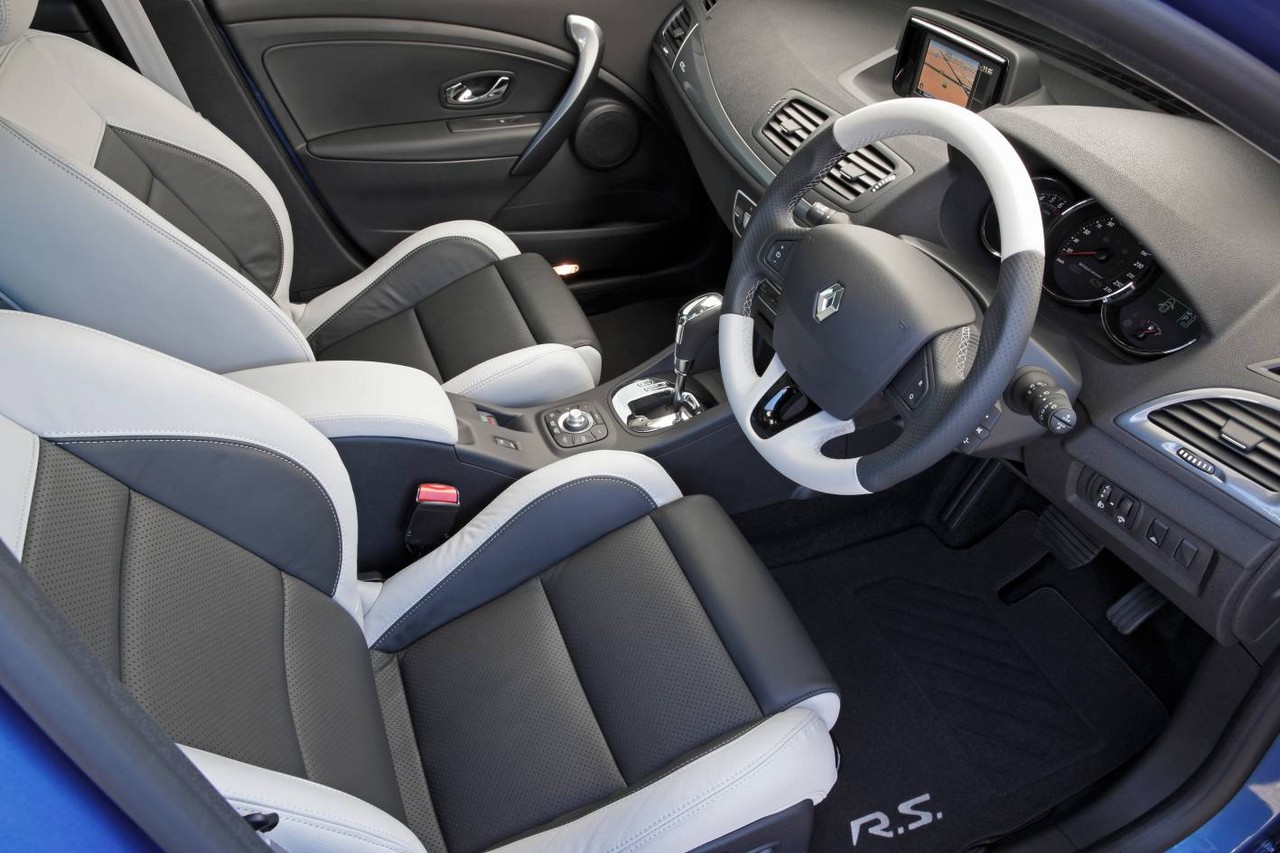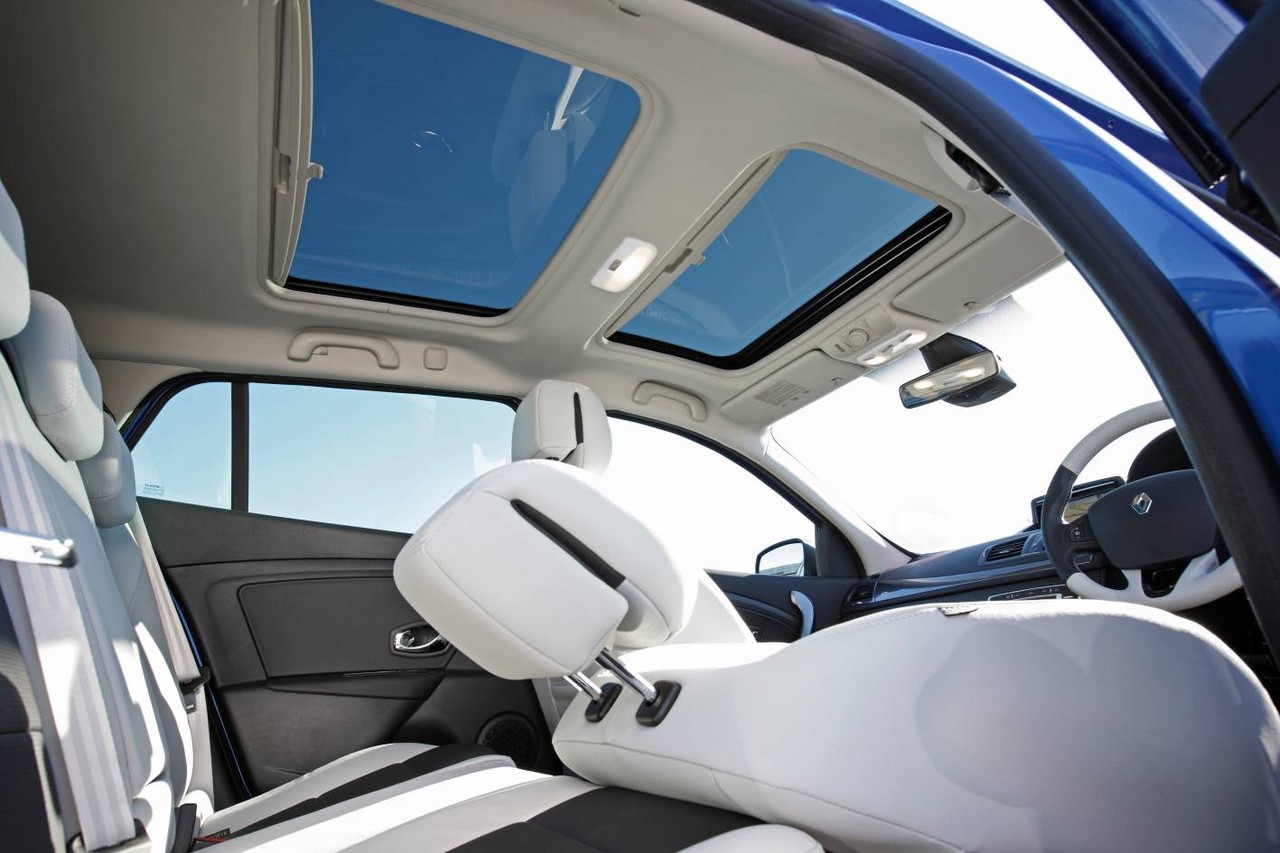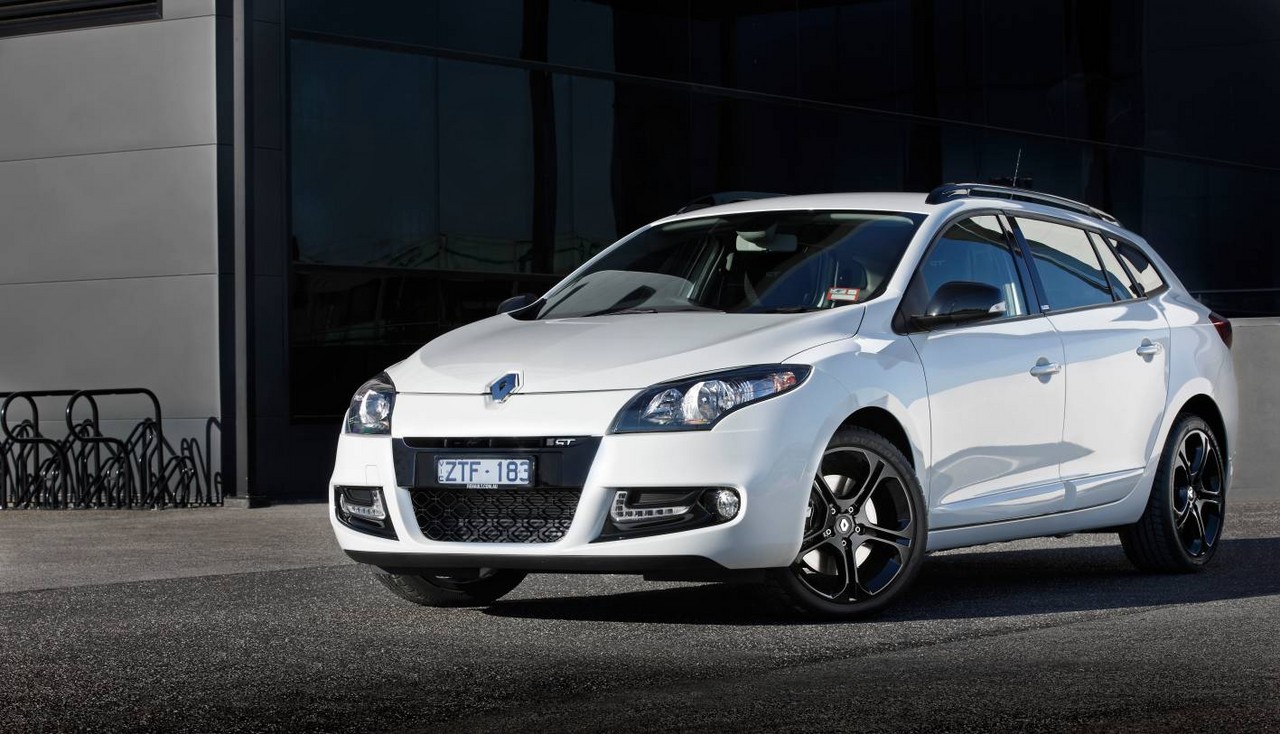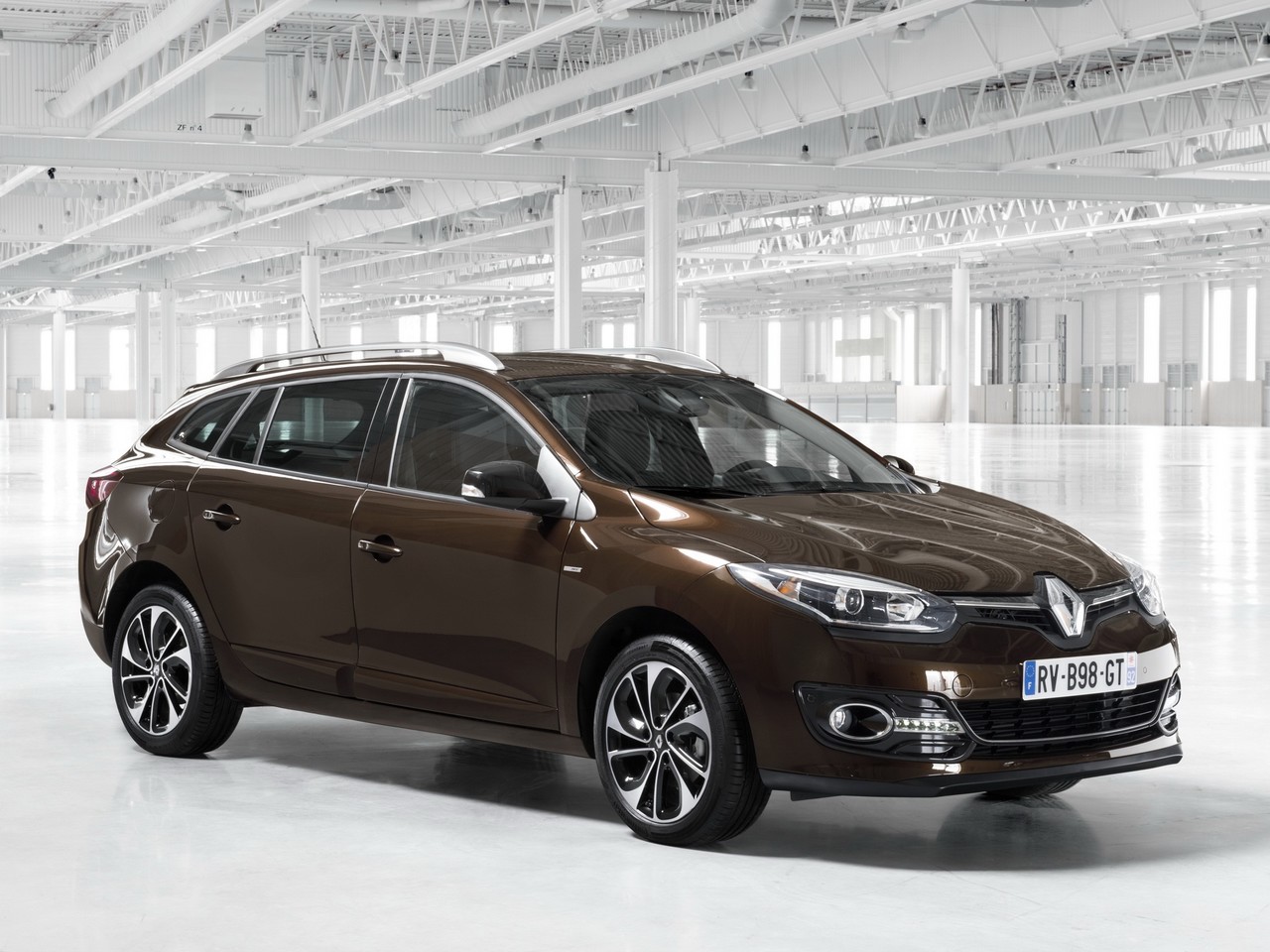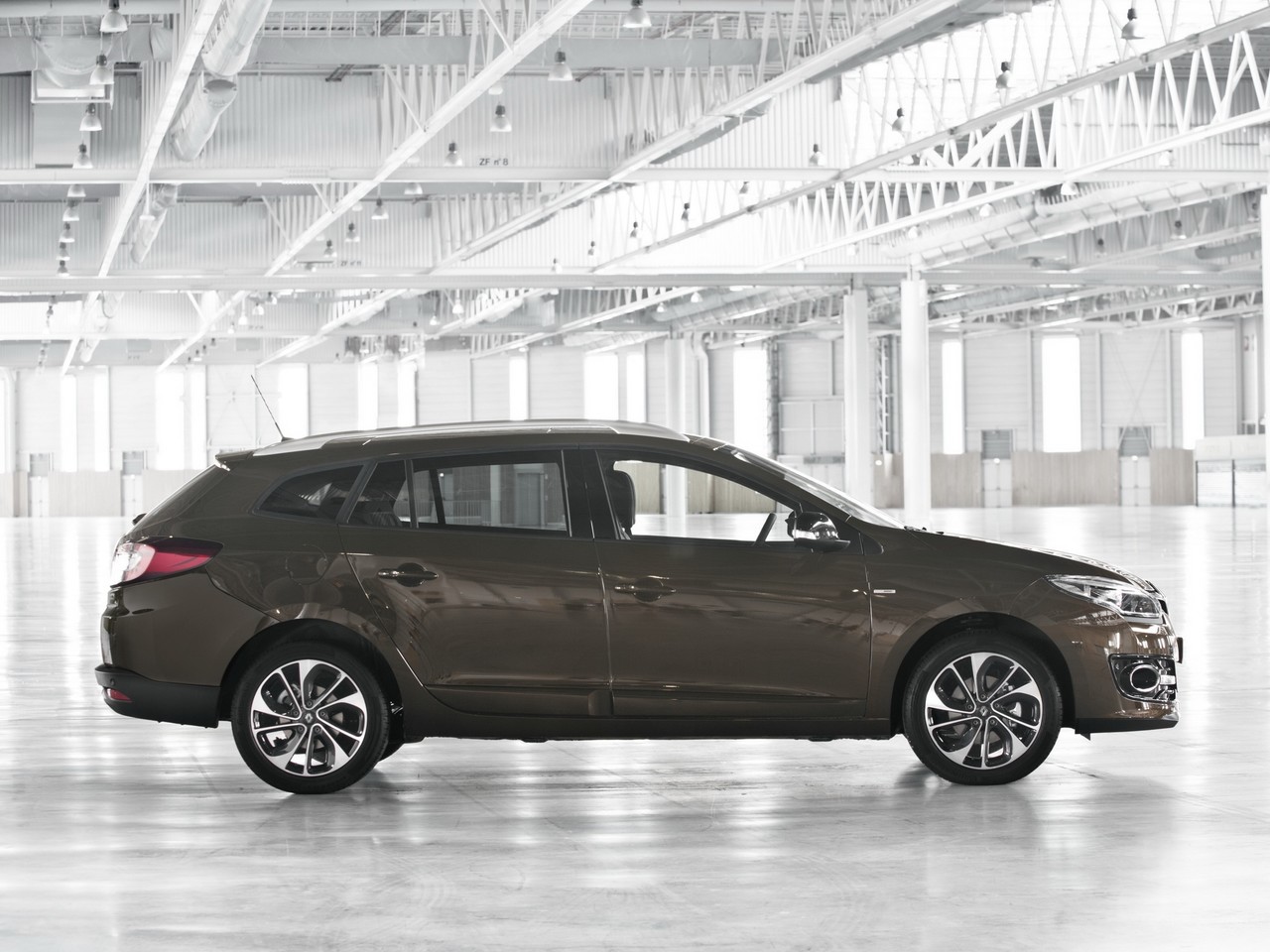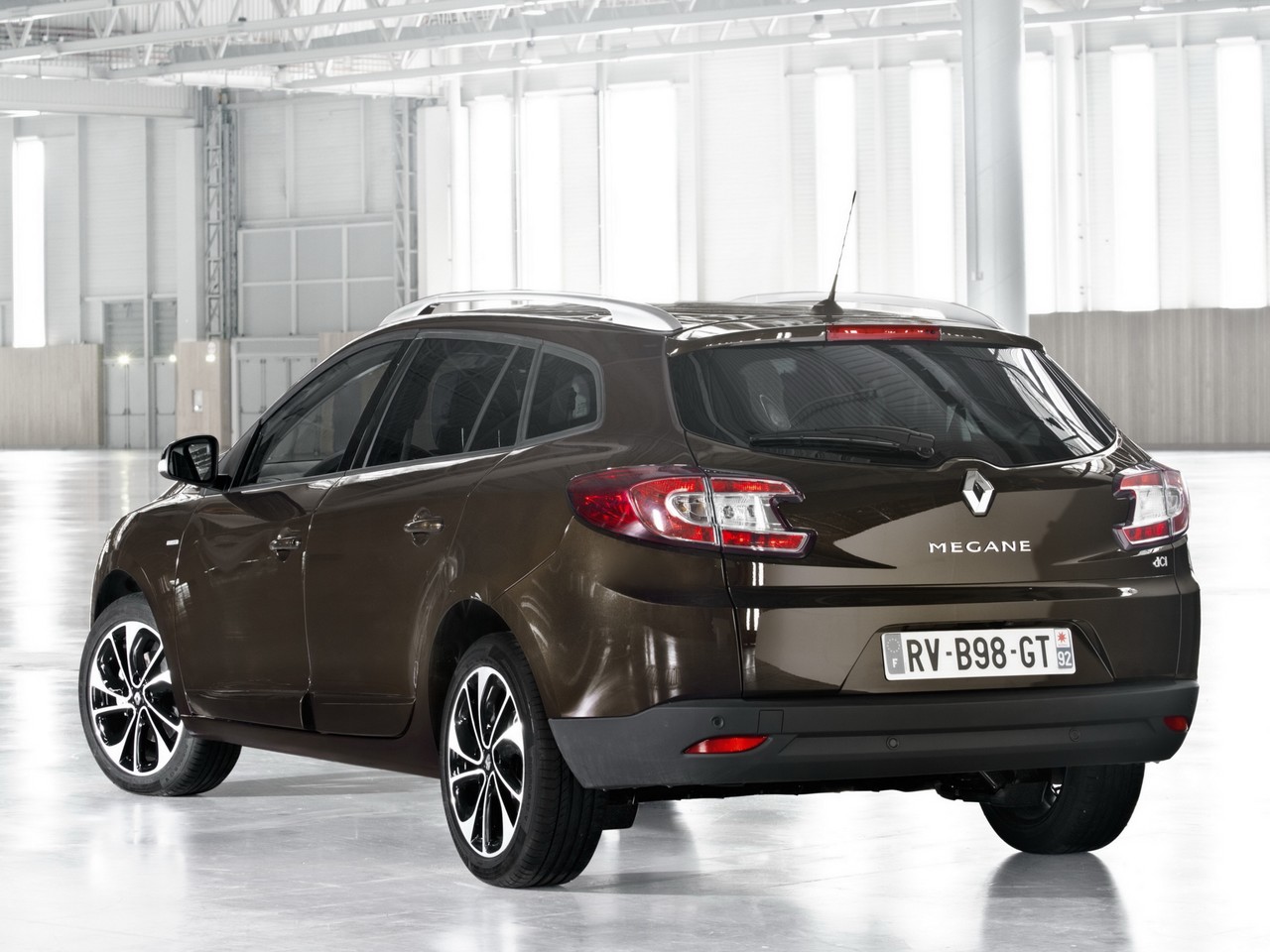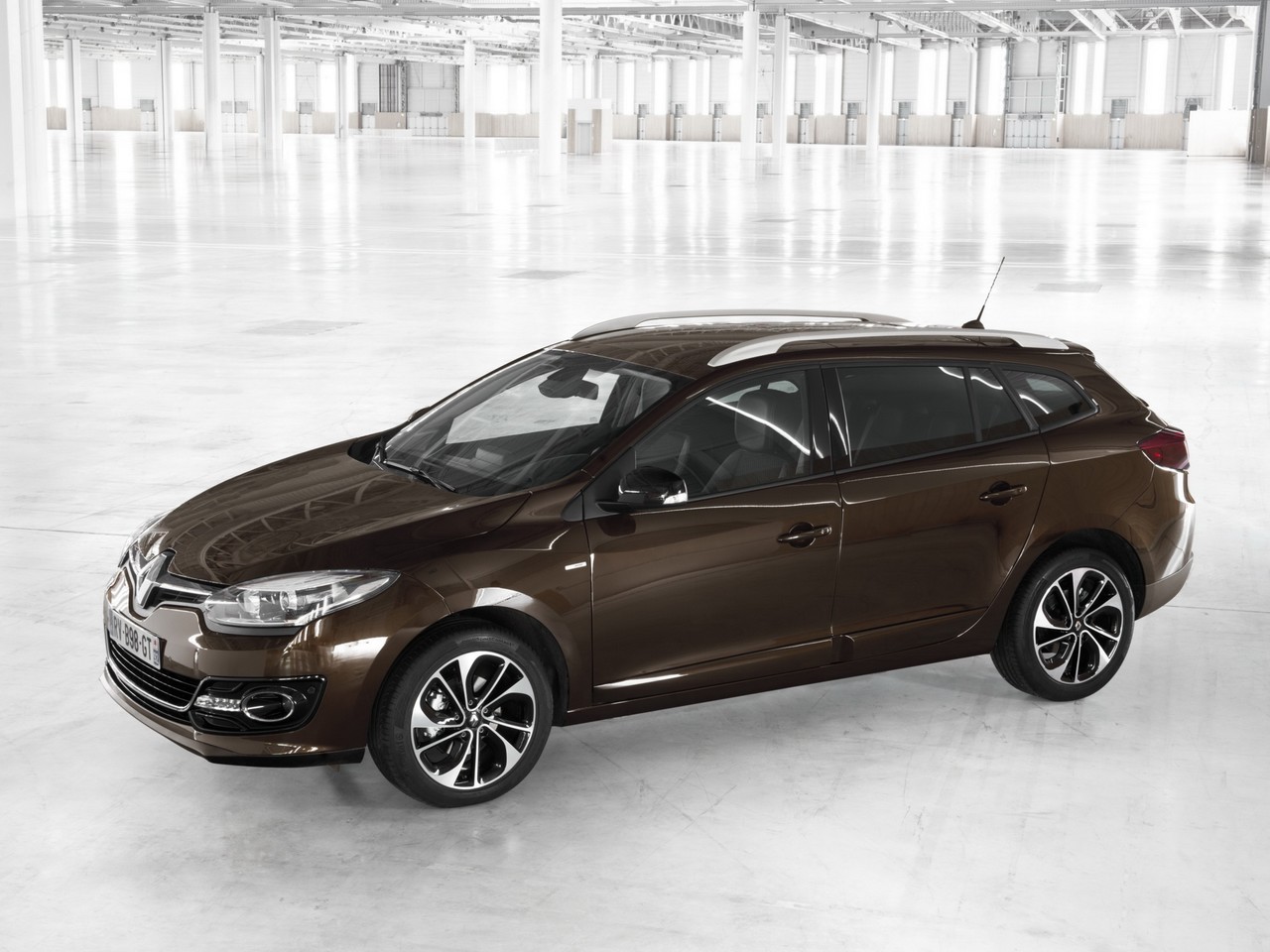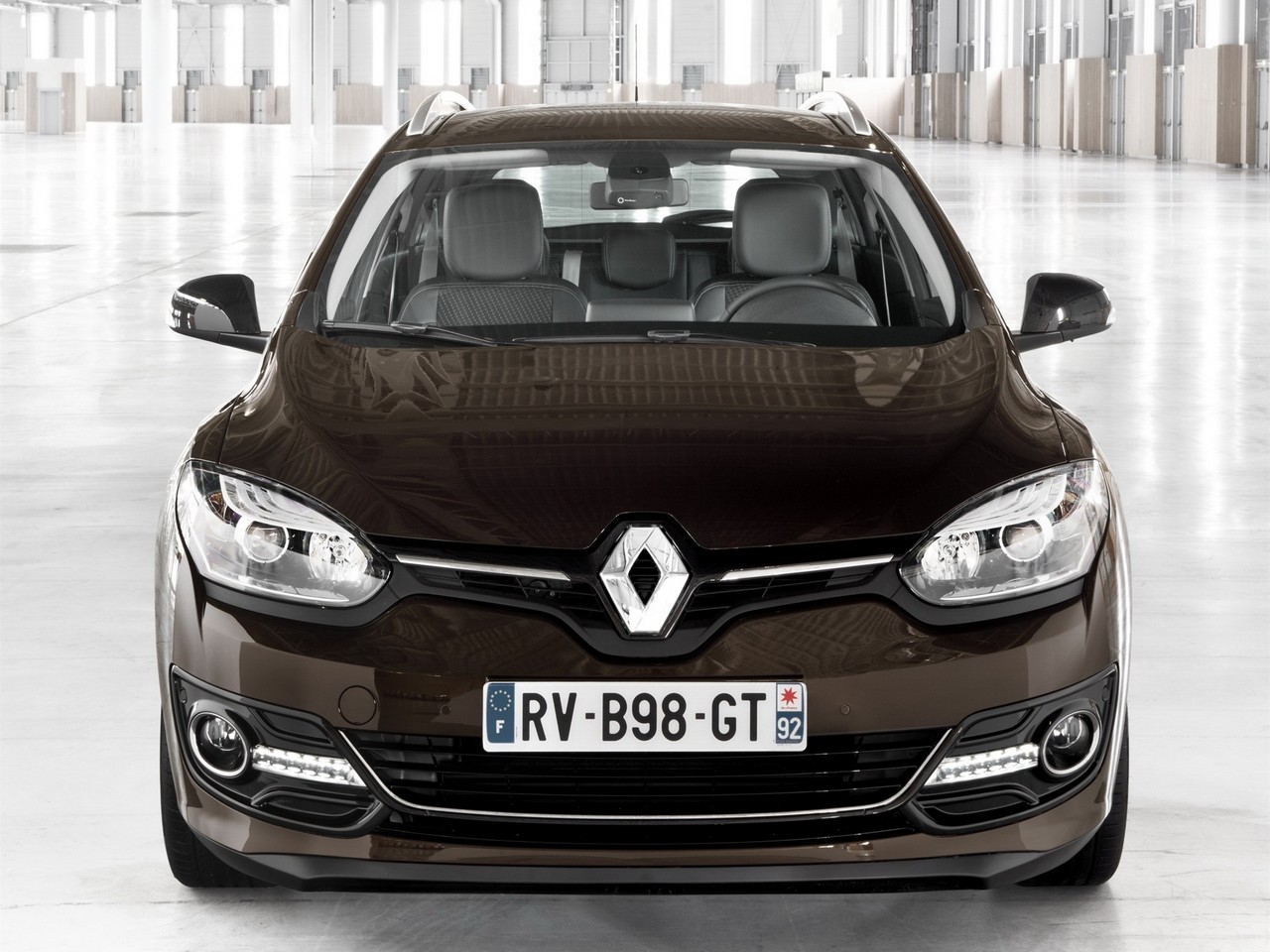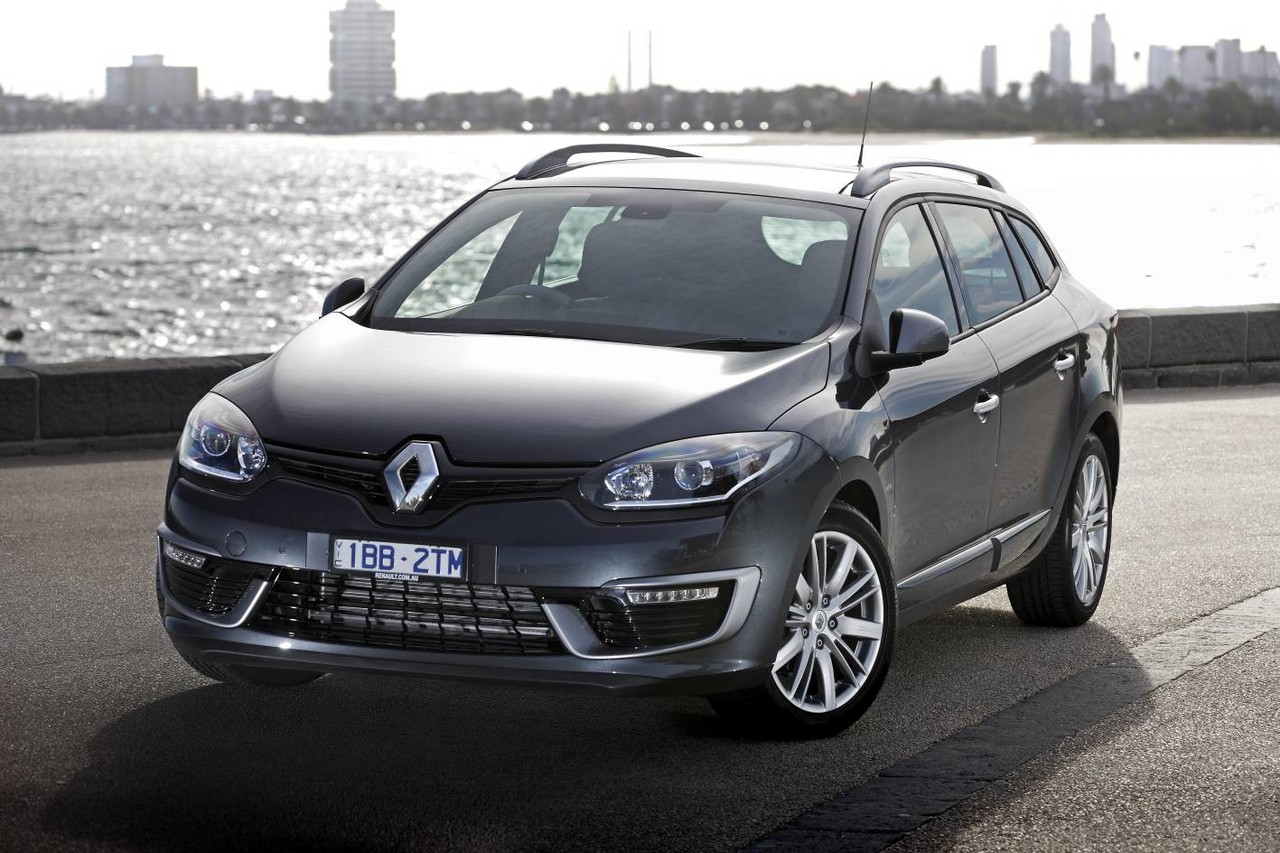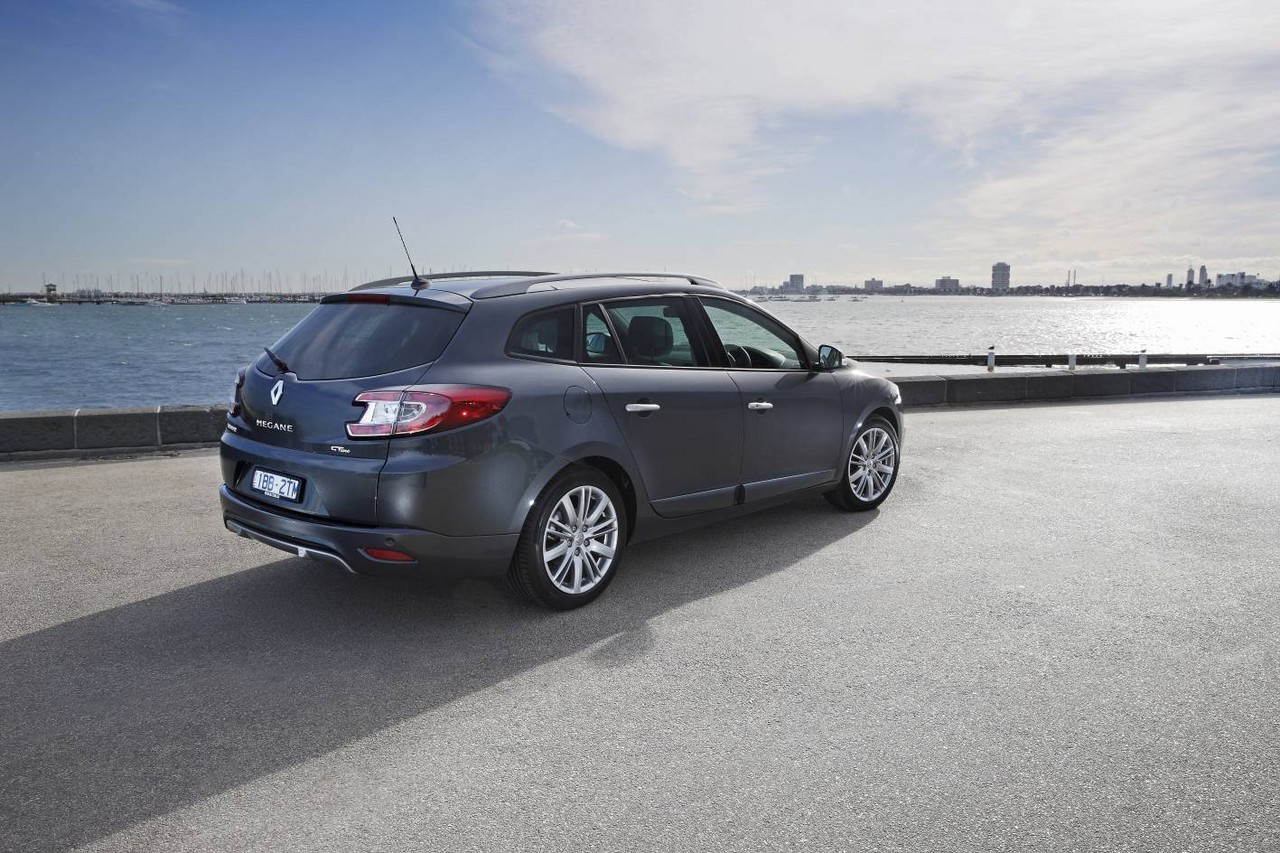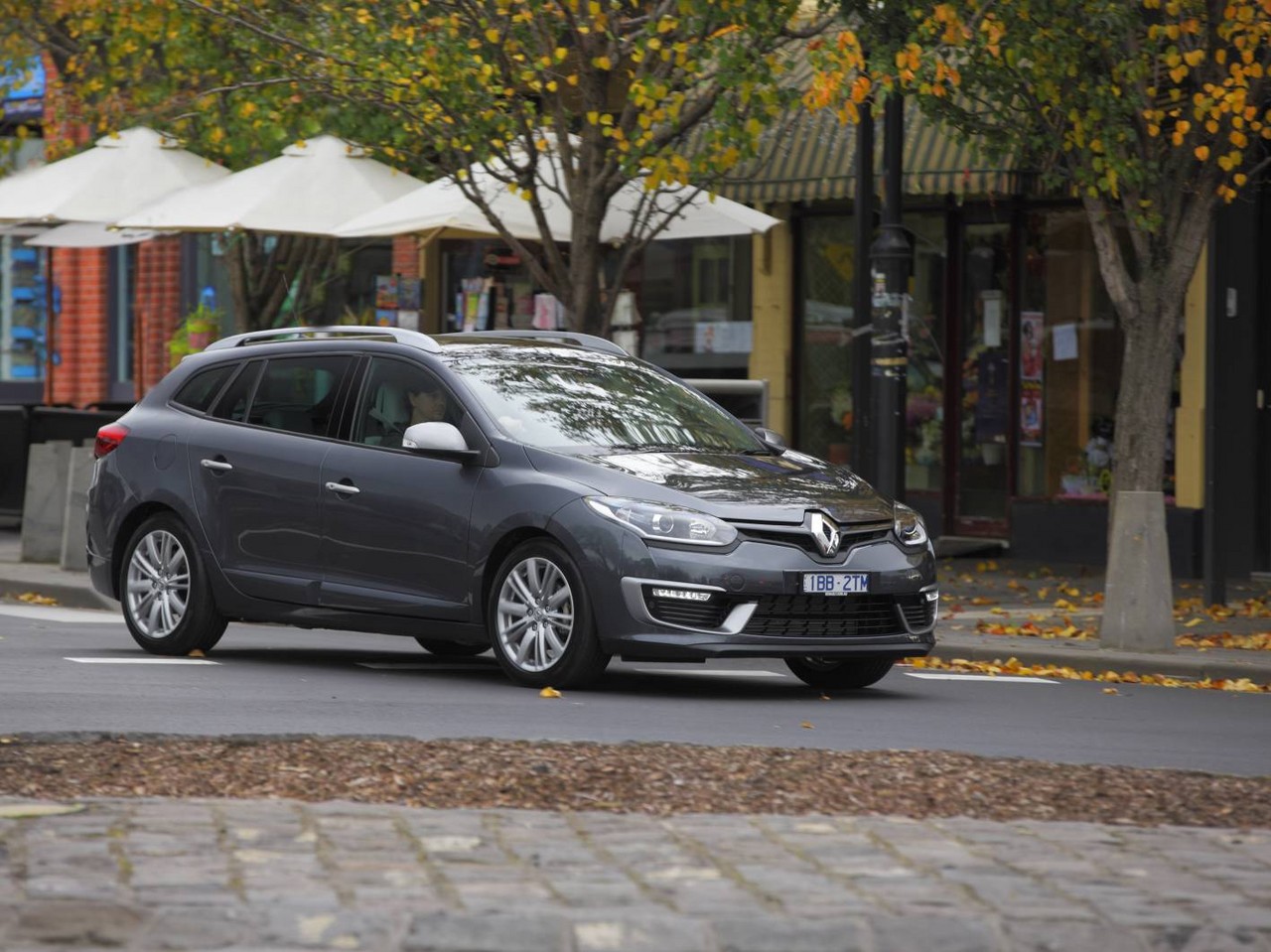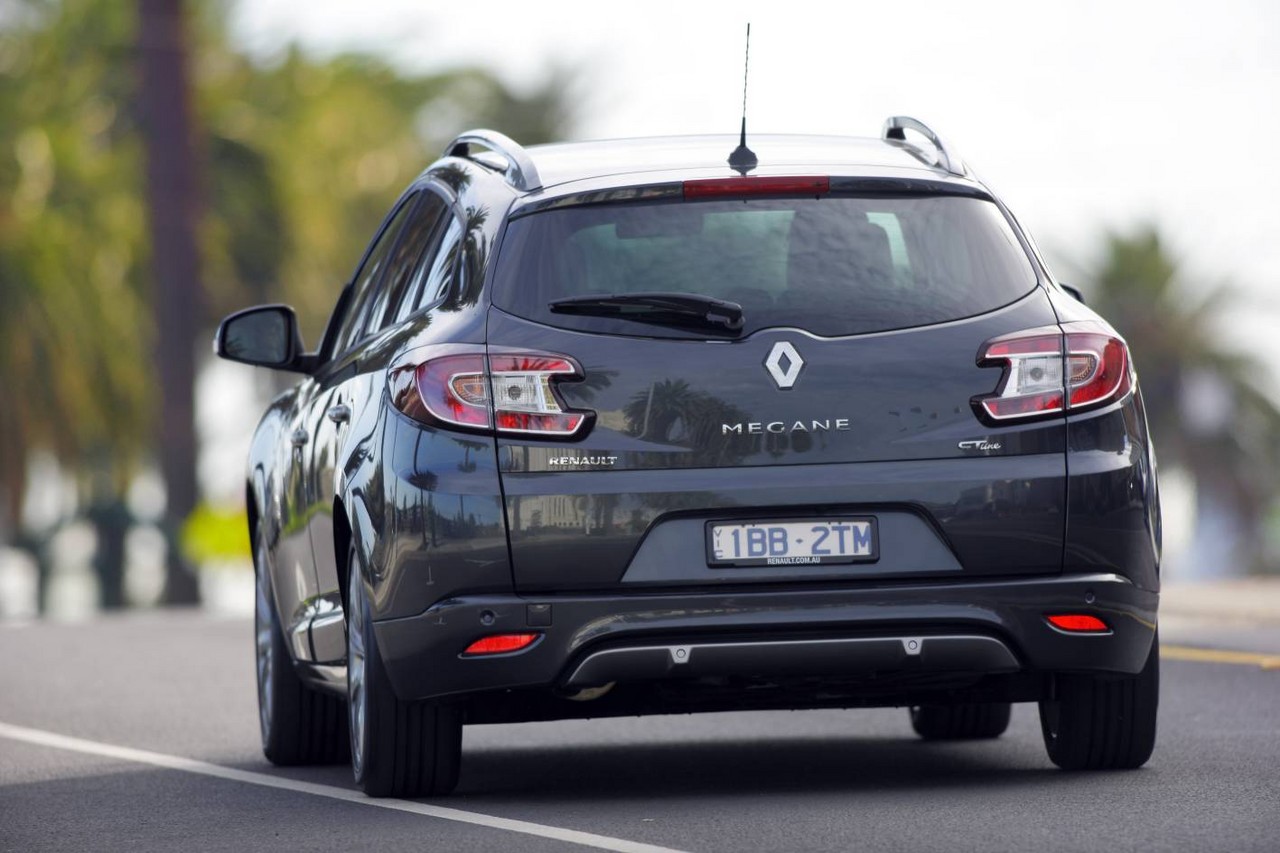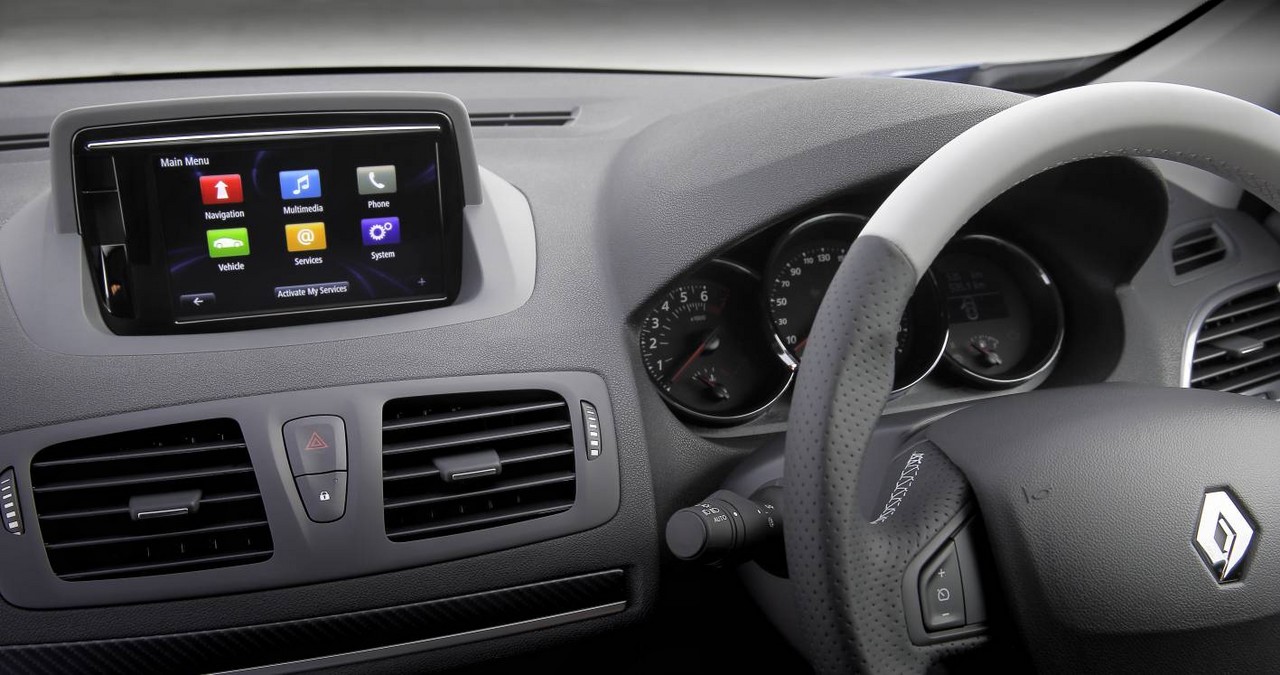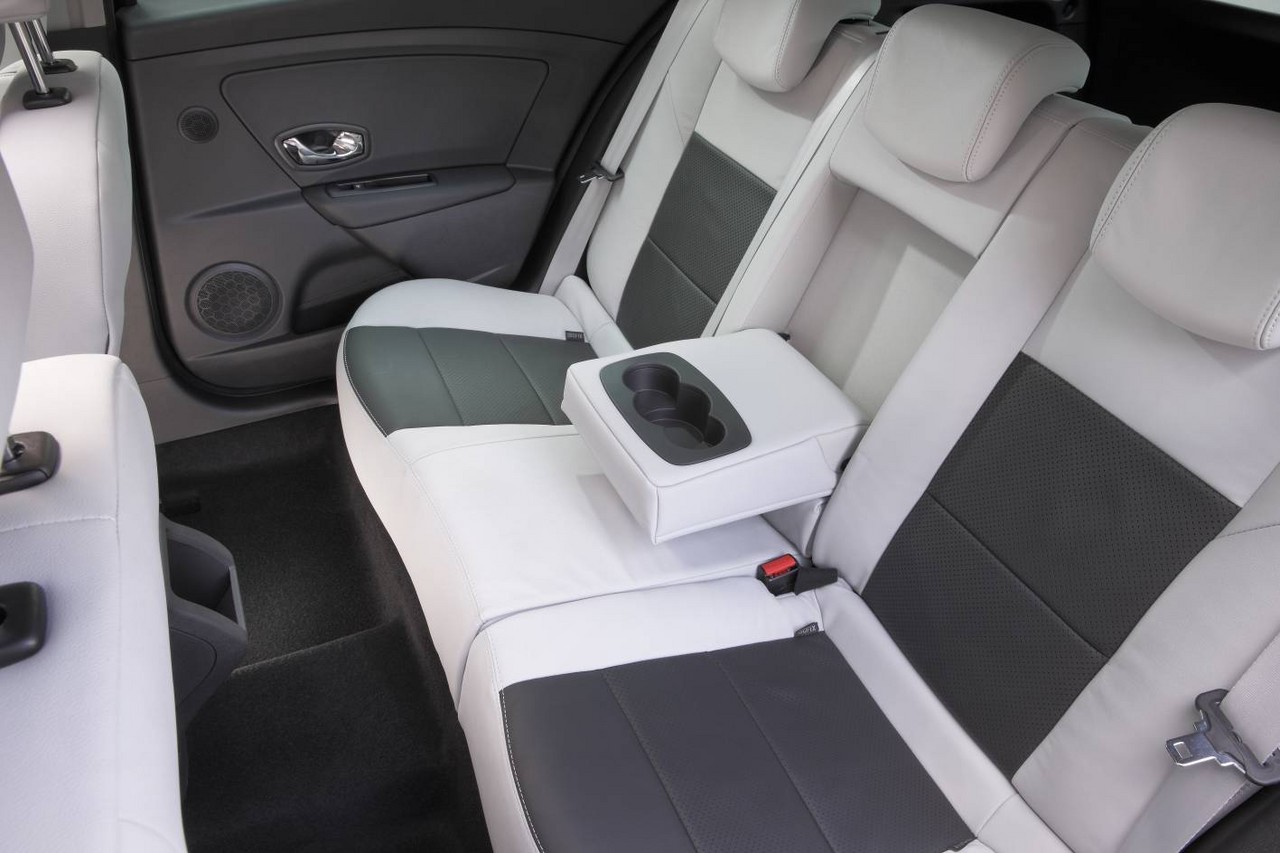
- Economical 1.5-litre turbo-diesel engine
- For GT 220, responsive 2.0-litre turbo petrol engine and refined manual transmission operation
- For GT-Line, accomplished dynamics
- For 2.0-litre petrol engine, occasional whining noise from CVT
- For GT 220, torque steer and road noise
- Firm rear suspension
Review: Renault K95.II Megane Wagon (2013-16)
Overview
Released in Australia in May 2013, the Renault K95 Megane Wagon was a mid-size, front-wheel drive wagon. Manufactured in Palencia, Spain, the Megane Wagon range initially consisted of limited-run turbocharged GT 220 variants, with Dynamique and GT-Line variants following in July 2013.
Engines
Of the engines,
- For Dynamique and GT-Line variants, the naturally aspirated 2.0-litre MR20DE petrol engine had an all-aluminium block and cylinder head, double overhead camshafts, variable intake valve timing, four valves per cylinder and a compression ratio of 10.2:1; and,
- Reserved for GT-Line variants, the 1.5-litre K9K 846 diesel engine had a cast iron block, an aluminium cylinder head, Borg-Warner turbocharger, common-rail injection, a single overhead camshaft, two valves per cylinder and a compression ratio of 15.2:1; and,
- For GT 220 variants, the 2.0-litre F4Rt engine had a cast iron block, an integrated twin-scroll turbocharger, double overhead camshafts, four valves per cylinder, variable intake valve timing and a compression ratio of 9.0:1. The F4Rt engine also had a ‘Stop and Start’ function which enabled it to shut down when the vehicle was stationary to conserve fuel.
Dimensions and suspension
Compared to the X32 Megane hatchback , the Megane Wagon was 263 mm longer (at 4558 mm), the same width (1808 mm), 36 mm taller (1507 mm) and had a 62 mm longer wheelbase (2703 mm). Similarly, the Megane Estate had MacPherson strut front suspension (with rectangular lower arms) and torsion beam rear suspension. Furthermore, the Megane Estate had an electric power steering system.
| Variant | Engine | Trans. | Peak power | Peak torque |
|---|---|---|---|---|
| Dynamique, GT-Line |
2.0-litre petrol I4 | 6sp CVT | 102 kW at 6000 rpm | 195 Nm at 3750 rpm |
| GT-Line | 1.5-litre turbo-diesel I4 | 6sp DCT | 81 kW at 4000 rpm | 240 Nm at 1750 rpm |
| GT 220 | 2.0-litre turbo petrol I4 | 6sp man. | 162 kW at 4750-6500 rpm | 340 Nm at 2400-3500 rpm |
Safety equipment
Standard safety equipment for the Megane Wagon included dual front airbags, front side airbags, full length curtain airbags, ABS, electronic brake force distribution, brake assist, electronic stability control, traction control and front seatbelts with pretensioners and load limiters.
Renault’s ‘Visio’ system – an extra-cost option available as part of a Premium Pack – included a Lane Departure Warning (for speeds above 70 km/h) and automatic operation of the high and low beam headlights (for speeds above 45 km/h). Using a camera mounted below the rear view mirror, the Lane Departure Warning system would sound an alarm and illuminate a warning light when the vehicle was detected to have crossed lane markings without the indicators having been activated.
Brakes
The standard braking package for the Megane Wagon consisted of 280 mm ventilated front brake discs and 260 mm solid rear discs. The GT 220, however, had 320 mm by 28 mm ventilated front brake discs.
Euro NCAP testing
In Euro NCAP crash testing , a 2008 Renault X95 Megane hatchback – fitted with a 1.5-litre turbo-diesel engine – received a five star adult occupant protection rating with a score of 36.83 out of 37. In Australia, however, the Megane was not fitted with rear seat belt reminders such that its score – as determined by ANCAP – was reduced by one point to 35.83. The Megane scored 15.8 out of 16 in the frontal offset impact test, with only a slight risk of serious chest injury for the driver. In the side impact and pole tests, however, maximum points were awarded.
Features
Standard features for the Megane Wagon Dynamique included 16-inch ‘Kaleido’ alloy wheels with 205/60 R16 tyres, a six speaker sound system with a CD player, MP3-compatibility, auxiliary inputs (3.5 mm/USB) and Bluetooth connectivity (mobile phone and audio streaming), dual-zone climate control air conditioning, cruise control, front fog lights, LED daytime running lights, automatic headlights, rain-sensing wipers, rear parking sensors, a leather-wrapped steering wheel and gearshift lever, remote central locking, power mirrors and windows, a height and reach adjustable steering wheel, height adjustable front seats, an electronic assisted parking brake, luggage net, roof racks, a trip computer and an immobiliser.
The GT-Line variants were further equipped with 17-inch ‘Celsium’ alloy wheels with 205/50 R17 tyres, integrated satellite navigation with joystick control, Renault Sport-designed cloth sports seats, a leather-wrapped sport steering wheel, proximity key, push-button start and rear privacy glass.
For GT-Line variants, the optional Premium Pack added Renault’s ‘Visio’ system (see above), Cool Grey leather upholstery, heated front seats, front parking sensors, a rear view camera with park-assist guidlines, panoramic glass sunroof and a rear armrest with cupholders.
Megane Wagon GT 220
Compared to the GT-Line, the GT 220 was distinguished by its 18-inch ‘Serdard’ gloss black alloy wheels with Dunlop Sport Maxx tyres, red steering wheel stitching, ‘carbon fibre effect’ dashboard with red highlights, cloth-covered Renault Sport seats, RS Monitor, ‘GT 220’ badging and plaque and gloss black rear diffuser.
Like the GT-Line, the GT 220 was available with an optional Premium Pack which included Renault’s ‘Visio’ system, satellite navigation, Cool Grey leather upholstery, heated front seats, directional bi-xenon headlights, front parking sensors, a reversing camera with park guidelines and panoramic sunroof.
Australian deliveries of the GT 220 were limited to 220 vehicles.
Related links
- Press kit: Renault X95.II Megane Hatch, K95.II Megane Wagon, X95.II Megane CC (July 2013)
- Brochure: Renault K95 Megane Wagon (April 2014)
Review: Renault K95.III Megane Wagon (2014-16)
Overview
Released in Australia in July 2014, the K95 Phase III (K95.III) Megane Wagon introduced a revised range that included 1.2-litre turbocharged petrol engines.
Visually, the K95.III Megane could be identified by its front mask which featured elliptical headlights, an upper grille which spanned the distance between the headlights, a larger ‘Renault’ badge and a full-width lower grille.
| Engine | Trans. | Variant | Peak power | Peak torque |
|---|---|---|---|---|
| 1.2-litre turbo petrol I4 | 6sp DCT | Dynamique, GT-Line, GT-Line Premium |
97 kW at 5500 rpm | 205 Nm at 2000 rpm |
| 1.5-litre turbo-diesel I4 | 6sp DCT | Dynamique, GT-Line, GT-Line Premium |
103 kW at 6000 rpm | 195 Nm at 3750 rpm |
| 1.5-litre turbo-diesel I4 | 6sp man. | GT 220, GT 220 Premium |
162 kW at 4750-6500 rpm | 340 Nm at 2400-3500 rpm |
Safety equipment
Compared to its K95.II predecessor, standard safety equipment for the K95.III Megane Wagon was unchanged.
The GT-Line Premium and GT220 Premium, however, were equipped with Renault’s ‘Vision System’ which provided lane departure warnings and automatic operation of the high and low beam headlights. The lane departure warning system used a camera mounted on the windscreen below the rear view mirror to detect involuntary lane changes and operated at speeds above 70 km/h.
Features
Standard features for the Megane Wagon Dynamique included 16-inch ‘Kaleido’ alloy wheels with 205/55 R16 tyres, a four speaker sound system with a CD player, MP3-compatibility and auxiliary inputs (3.5 mm/USB), Bluetooth mobile phone connectivity and audio streaming, air conditioning, dark charcoal cloth upholstery, cruise control with speed limiter, front and rear fog lights, automatic headlights, rain-sensing wipers, front and rear parking sensors, 60/40 split and flat folding rear seats, remote central locking with Renault smart key card, power windows and mirrors, a height and reach adjustable steering wheel, height adjustable driver’s seat, push-button start, 12 volt power socket, a trip computer and an immobiliser.
The Megane GT-Line and GT 220 were further equipped with a ‘Radio Auditorium Sound’ system by Arkamys with eight speakers, Renault’s ‘R-Link’ enhanced satellite navigation system with a seven-inch touchscreen, dual-zone climate control air conditioning, leather seat trim, driver’s seat lumbar adjustment, LED daytime running lights (instead of fog lights), a leather-wrapped steering wheel and gear knob, power folding and heated door mirrors, an additional rear 12 volt power socket and ‘carbon fibre effect’ dashboard trim. While the GT-Line variants were fitted with 17-inch ‘Celsium’ alloy wheels with 205/50 R17 tyres, the GT220 had 18-inch ‘Serdard’ alloy wheels with 225/40 R18 tyres, sports suspension and Renault’s R.S. Monitor 1.0.
The GT-Line Premium and GT 220 Premium were distinguished by their cool grey leather seats, heated front seats, rear view camera, automatic parking brake and power-operated panoramic sunroof. The GT 220 Premium was also fitted with Renault’s R.S. Monitor 2.0 which could display figures from 15 sensors, power and torque curves, and a CG diagram of longitudinal and lateral accelerations; drivers could also download the plan of a race circuit from a USB key to access an automatic timer and monitor their laptimes.
Brochure
Related links
